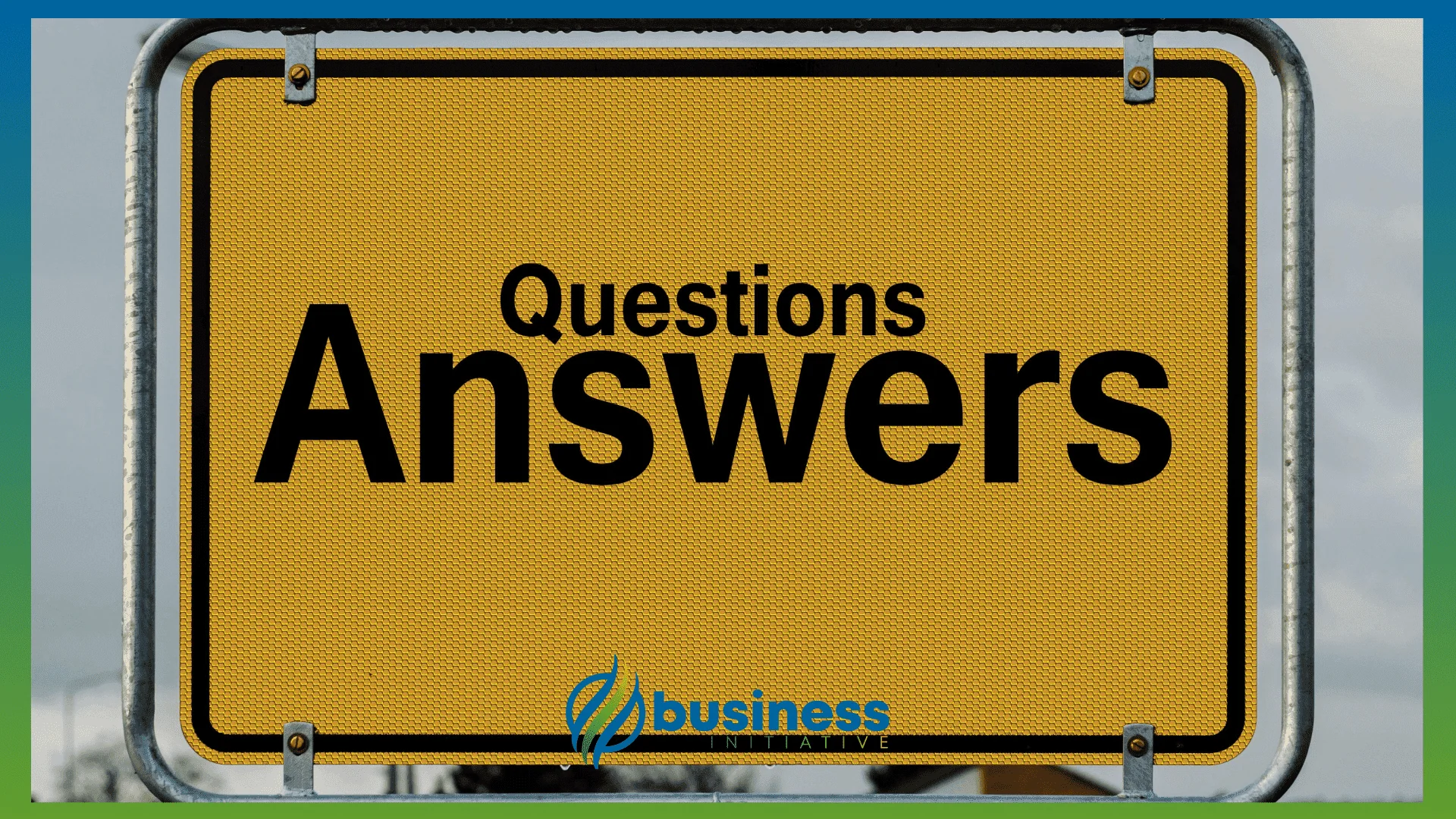SWOT analysis is a strategic planning tool that helps businesses identify their Strengths, Weaknesses, Opportunities, and Threats.
By evaluating these four key aspects of a company’s internal and external environment, decision-makers can gain valuable insights to aid in decision-making and planning.
 Key Takeaways
Key Takeaways
- Understand the purpose: SWOT analysis is a strategic planning tool that helps businesses make informed decisions by evaluating internal and external factors that may impact their success.
- Be honest and thorough: When conducting a SWOT analysis, it's crucial to be objective, honest, and critical in assessing your business' strengths, weaknesses, opportunities, and threats. This will lead to more accurate results and actionable insights.
- Prioritize and focus: Not all findings in your SWOT analysis carry equal weight. Analyze the results to identify which factors are most significant for your business' growth or improvement and prioritize them accordingly.
- Leverage strengths and address weaknesses: Use the insights from your SWOT analysis to capitalize on your business' strengths while working on addressing its weaknesses. This will help create a competitive advantage in the market.
- Monitor changes: The business environment is constantly changing; therefore, it's essential to conduct regular SWOT analyses to stay updated with new developments or challenges that may affect your organization's performance.
Embark on a journey to unlock your business’s hidden potential with our in-depth SWOT Analysis guide.
By diving into this powerful resource, you’ll discover the keys to making data-driven decisions that propel your organization towards success.
Whether you’re a seasoned entrepreneur or just starting out, this guide will provide you with valuable insights and actionable strategies tailored for your unique situation.
 Table of Contents
Table of Contents
So why wait?
Unleash the power of SWOT Analysis and transform your business today!
Purpose and Benefits of Conducting a SWOT Analysis

Conducting a SWOT analysis offers several benefits for businesses, including:
1. Identifying areas where the company excels or has a competitive advantage.
A SWOT analysis helps businesses recognize their strengths and capitalize on them.
According to a study by Bain & Company, companies that effectively leverage their core competencies are 2.6 times more likely to achieve above-average industry performance.
2. Recognizing potential pitfalls and challenges that need to be addressed.
By identifying weaknesses, businesses can proactively address them and minimize risks.
A study by McKinsey & Company found that organizations that actively manage risks are 29% more likely to outperform their peers in terms of total returns to shareholders.
3. Uncovering opportunities for growth and expansion.
A SWOT analysis can reveal untapped markets or new product/service offerings that can drive growth.
According to a report by the Boston Consulting Group, companies that successfully identify and pursue new growth opportunities achieve an average annual growth rate of 5.8% compared to the industry average of 3.5%.
4. Guiding strategic decision-making and setting priorities.
A well-executed SWOT analysis can help businesses make informed decisions and allocate resources effectively.
Research by the Harvard Business Review found that companies using data-driven decision-making are 5% more productive and 6% more profitable than their competitors.
A Brief History and Origin of the SWOT Analysis Technique
The concept of the SWOT analysis has its roots in the 1960s when Albert Humphrey, a business consultant at the Stanford Research Institute, developed a framework called SOFT analysis (Satisfactory, Opportunity, Fault, and Threat).
Over time, this framework evolved into the modern SWOT analysis that we know today.
It has since become a widely used technique for assessing a company’s position within its industry and guiding strategic planning efforts.
➤ MORE: Download our SWOT Analysis Template for FREE!
Components of the SWOT Analysis
Strengths

- Understanding Strengths
Strengths are the internal factors that contribute to an organization’s success.
These can include resources, skills, or capabilities that give the company a competitive edge over its rivals.
- Identifying and Assessing Strengths
Some examples of common strengths in businesses include a strong brand reputation, highly skilled workforce, efficient operations, and innovative products or services.
To identify and assess an organization’s strengths, decision-makers should examine internal resources and capabilities, as well as consider feedback from employees, customers, and industry experts.
Weaknesses

- Defining Weaknesses
Weaknesses are internal factors that hinder an organization’s performance or limit its ability to compete effectively in the marketplace.
- Identifying and Assessing Weaknesses
Common weaknesses in businesses may include outdated technology, high employee turnover, weak management structure, or lack of financial resources.
To identify and assess an organization’s weaknesses, it is important to conduct a thorough internal analysis and gather input from various stakeholders to pinpoint areas in need of improvement.
Opportunities

- Exploring Opportunities
Opportunities are external factors that can be exploited to enhance an organization’s performance or growth.
These can arise from changes in market trends, consumer behavior, technology advancements, or new legislation.
- Identifying and Assessing Opportunities
Examples of common opportunities in various industries might include expanding into new markets, forming strategic partnerships, or leveraging emerging technologies.
To identify and assess potential opportunities for an organization, decision-makers should monitor industry developments, analyze competitors’ strategies, and stay informed about economic trends and changes in consumer preferences.
Threats

- Recognizing Threats
Threats are external factors that can negatively impact an organization’s performance or put its long-term viability at risk.
These might stem from competition, regulatory changes, economic downturns, or natural disasters.
- Identifying and Assessing Threats
Examples of common threats in various industries include increased competition, changing regulations, economic downturns, or supply chain disruptions.
To identify and assess potential threats for an organization, it is crucial to stay informed about industry trends, competitor activities, and external forces that may impact the business environment.
Examples of Successful SWOT Strategies
These real-life examples demonstrate how successful companies have used SWOT analysis to inform their strategic decisions, resulting in sustained growth and competitive advantage over rivals.

Apple’s SWOT analysis identified its strong brand, innovative products, and loyal customer base as key strengths.
The company capitalized on these strengths by continuously investing in research and development to create groundbreaking products like the iPhone and iPad.
Apple also addressed its weaknesses, such as limited product lines, by diversifying into new markets like wearables with the Apple Watch.
As a result, Apple remains one of the most valuable companies globally.

Starbucks conducted a SWOT analysis that revealed its strengths in brand recognition, quality coffee offerings, and global presence.
The company leveraged these strengths to expand its international footprint while improving customer experience through mobile ordering and digital rewards programs.
Additionally, Starbucks tackled potential threats from competitors by focusing on sustainability initiatives and building strong relationships with suppliers.

Amazon’s SWOT analysis highlighted its vast product selection, efficient logistics network, and advanced technology infrastructure as key strengths.
The company utilized these advantages to expand into new business areas like cloud computing with Amazon Web Services (AWS) and streaming services with Prime Video.
At the same time, Amazon addressed potential weaknesses such as low-profit margins by focusing on automation and cost reduction strategies.
Conducting Your SWOT Analysis

Step 1: Gather Relevant Information
Types of Data and Information
To conduct a SWOT analysis, decision-makers need to gather relevant data and information about the organization’s internal environment (strengths and weaknesses) and external environment (opportunities and threats).
Sources for Obtaining Data
Sources for obtaining data can include company records, employee feedback, customer surveys, industry reports, and market research.
The Importance of Accuracy
Accurate and up-to-date information is crucial for conducting a meaningful SWOT analysis that reflects the current state of the organization and its environment.
Step 2: Organize and Categorize Information
Creating a SWOT Analysis Matrix
A SWOT analysis matrix is used to organize and categorize information into the four components: strengths, weaknesses, opportunities, and threats.
Assigning Information to Categories
Assign each piece of information to the appropriate SWOT category based on whether it represents an internal or external factor and whether it has a positive or negative impact on the organization.
Tips for Effective Organization
To organize and categorize information effectively:
- Be concise and specific.
- Prioritize items based on their importance or potential impact.
- Avoid duplication or overlapping items.
Step 3: Analyze and Interpret Findings
Evaluating Significance
Evaluate the significance of each SWOT component by considering its potential impact on the organization’s objectives and overall performance.
Identifying Patterns and Relationships
Identify patterns and relationships between factors within each category, as well as across categories.
This can help uncover hidden connections or ways to leverage strengths and opportunities while mitigating weaknesses and threats.
Interpreting Results
Interpret the results of the SWOT analysis by summarizing key findings, highlighting areas in need of improvement, and identifying opportunities for growth or strategic change.
Step 4: Develop Actionable Strategies
Formulating Strategies
Based on the SWOT analysis findings, formulate strategies that address weaknesses and threats while leveraging strengths and opportunities.
Addressing Weaknesses and Threats
Develop plans to address identified weaknesses and mitigate potential threats.
This may involve investing in employee training, improving operational efficiency, or diversifying the business.
SWOT Analysis Best Practices and Tips

1. Set clear objectives:
Before starting the analysis, establish specific goals or questions that the SWOT analysis should address.
This will help guide the process and ensure that it remains focused on relevant issues.
2. Use a structured approach:
Follow a systematic process when gathering, organizing, and analyzing data.
This can help prevent inconsistencies or gaps in information that could undermine the accuracy of the analysis.
3. Gather input from multiple sources:
Solicit feedback and insights from various stakeholders, including employees at different levels, customers, suppliers, and industry experts.
This will provide a richer understanding of the organization’s strengths, weaknesses, opportunities, and threats.
4. Quantify data when possible:
Use numerical values or metrics to better understand the impact or significance of specific factors identified in the SWOT analysis.
For example, consider market share percentages or customer satisfaction scores.
5. Rank items by importance:
Prioritize factors within each SWOT category based on their potential impact on the organization’s objectives.
This can help identify key strategic priorities and inform decision-making processes.
➤ Take Initiative! Download our SWOT Analysis Template for FREE!
Tips for Using SWOT Analysis Effectively

1. Communicate results widely:
Share findings with key stakeholders and team members throughout the organization to encourage buy-in and create a shared understanding of strategic priorities.
2. Integrate findings into planning processes:
Use insights gained from the SWOT analysis to inform strategic plans, business initiatives, budgets, and resource allocation decisions.
3. Monitor progress and update regularly:
Regularly review progress against identified strengths, weaknesses, opportunities, and threats to assess whether strategies are yielding desired results.
Update the SWOT analysis as needed to reflect changes in internal or external factors.
4. Combine with other analytical tools:
Use complementary tools such as PESTLE analysis (Political, Economic, Social-cultural, Technological Legal Environment) or Porter’s Five Forces framework alongside your SWOT analysis for a more comprehensive understanding of the organization’s strategic position.
5. Encourage critical thinking and constructive debate:
Foster an open dialogue around the findings of the SWOT analysis, allowing team members to challenge assumptions, explore alternative perspectives, and identify potential blind spots.
This can lead to more robust strategies and a deeper understanding of the organization’s strengths and weaknesses.
In Summary…
The SWOT analysis is a valuable strategic planning tool that enables organizations to gain insights into their internal and external environments.
By identifying strengths, weaknesses, opportunities, and threats, decision-makers can develop actionable strategies to address challenges and capitalize on growth opportunities.
Incorporating SWOT Analysis into Strategic Planning
It is highly recommended for businesses to incorporate SWOT analysis into their strategic planning processes.
This approach can help organizations stay competitive in an ever-changing market landscape by allowing them to adapt quickly to new challenges and seize emerging opportunities.
Versatility and Adaptability of the SWOT Analysis Technique
The versatility and adaptability of the SWOT analysis technique make it suitable for organizations across various industries and sizes.
When you regularly conduct SWOT analyses, you can continuously monitor your business’s performance, fine-tune your strategies, and make well-informed decisions that drive long-term success.
Ready to take your business to the next level?
Don’t miss this opportunity!
Schedule a consultation call with Business Initiative to discover tailored solutions that will help your organization thrive.
Reach out Tweet to @BisInitiative
Plus, sign up for our email newsletter to stay informed about the latest industry insights and valuable resources.
FAQs - Frequently Asked Questions About Conducting a SWOT Analysis on a Business

What is the main purpose of conducting a SWOT analysis?
The main purpose is to identify strengths, weaknesses, opportunities, and threats to guide strategic planning.
Learn More...
A SWOT analysis aims to provide a comprehensive overview of a business's internal and external factors affecting its growth and performance.
By identifying strengths and opportunities, decision-makers can formulate strategies that leverage competitive advantages.
Recognizing weaknesses and threats enables proactive steps to address challenges.
Strategic planning informed by SWOT analysis helps organizations allocate resources effectively and improve their market positioning.
How can SWOT analysis benefit a business?
SWOT analysis benefits a business by uncovering growth opportunities and identifying potential challenges.
Learn More...
A well-conducted SWOT analysis benefits businesses in several ways:
- Highlights core competencies and competitive advantages.
- Reveals growth opportunities in untapped markets or new product areas.
- Identifies risks and weaknesses that can be mitigated.
- Provides a data-driven foundation for setting strategic priorities.
Research by Bain & Company shows that companies that use core competencies achieve 2.6x higher performance.
What are some best practices for conducting a SWOT analysis?
Best practices include setting clear objectives, gathering diverse input, and updating regularly.
Learn More...
Following best practices ensures an accurate and actionable SWOT analysis:
- Set Clear Objectives: Define specific goals or questions to guide the analysis.
- Gather Diverse Input: Seek input from employees, customers, and industry experts.
- Quantify Data: Use numerical metrics like market share or customer satisfaction scores.
- Rank by Importance: Prioritize findings based on potential impact.
Following these steps helps uncover valuable insights and leads to better strategic decisions.
What is a SWOT analysis matrix, and how do you use it?
A SWOT analysis matrix organizes findings into strengths, weaknesses, opportunities, and threats.
Learn More...
A SWOT matrix is a 2x2 grid that helps organize and categorize the analysis results into four components.
It provides a visual framework for interpreting findings and identifying patterns or relationships across categories.
To use it effectively, gather relevant data, assign information to the appropriate quadrant, and prioritize items based on impact.
Analyzing the matrix allows businesses to create strategic plans that leverage strengths and opportunities while addressing weaknesses and threats.
How frequently should a business conduct a SWOT analysis?
Businesses should conduct a SWOT analysis annually or when facing significant changes.
Learn More...
Regularly conducting a SWOT analysis ensures strategies remain aligned with shifting market conditions.
An annual review helps capture new opportunities or emerging threats while allowing organizations to monitor progress.
Businesses should also conduct SWOT analyses when facing significant changes like market disruptions, regulatory shifts, or new competitors.
Frequent updates provide fresh insights that aid in refining strategies and maintaining competitive advantages.
Additional Resources
We also encourage you to explore these extra tools for further reading and research on SWOT analysis:
➤ FREE DOWNLOAD:Get a copy of Business Initiative's SWOT Analysis Template HERE!
MindTools: SWOT Analysis - Discover New Opportunities, Manage and Eliminate Threats
PESTLE Analysis: What Is PESTLE Analysis? A Tool for Business Analysis
QuickMBA: Porter’s Five Forces - A Model for Industry Analysis
Sources
In this article, we've referenced various sources to support our discussion about SWOT analysis. Below is a list of all the links mentioned in the text:
Share this article with your colleagues and connections to spread the knowledge and help others benefit from these powerful strategies, too.


